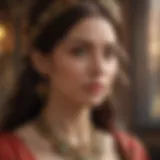Unlocking the Mysteries of Tarot: Insights and Answers
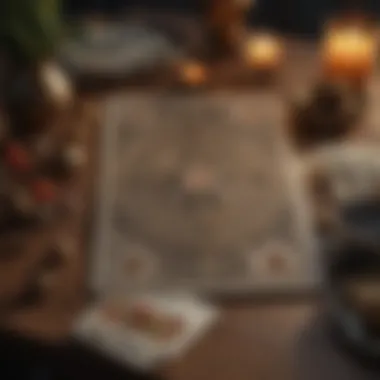

Intro
In the pursuit of understanding life's complexities, both tarot cards and astrology offer unique lenses through which individuals can explore their internal worlds and external realities. The intersection of these practices reveals multifaceted insights, particularly concerning personal and interpersonal affairs. This section sets the stage for a deeper inspection of how tarot functions as a guide in deciphering life's inquiries.
Characteristics of Each Zodiac Sign
Understanding the distinct characteristics associated with each zodiac sign enhances the relevance of tarot card interpretations. It helps practitioners construct a rich narrative around readings, especially if questions pertain to personal relationships or personal development.
Overview of Personality Traits
Each sign of the zodiac correlates with specific personality traits. Those born under Aries are often viewed as energetic and assertive, while Libras are unanimously seen as diplomats, searching for balance. This dynamic structure fosters deeper connections when integrated with tarot readings, enriching the questions posed to the cards.
Strengths and Weaknesses
Every sign has unique strengths but also inherent weaknesses. This duality plays a critical role in how individuals perceive their life's circumstances. For instance, the strength of Scorpio’s determination can be compelling, yet their tendency toward jealousy often catches them off guard. Understanding these traits aids in tailoring tarot inquiries related specifically to one’s sign.
Compatibility with Other Signs
Examining zodiac compatibilities brings further layers to personal relationships. Compatibility guides are vital for interpreting tarot cards focused on areas like love and partnerships. Pisces, often doted as sensitive and caring, may harmonize well with Taurus, known for its stability. Yet not every pairing flows smoothly, and recognizing potential conflicts through both astrological insights and tarot can yield great clarity.
How to Interpret Tarot Cards
Going deeper into the main topic, we'll focus especially on tarot interpretations. This part provides essential tools in understanding the combination of tarot with zodiac insights, elevating the depth of readings.
Major and Minor Arcana
The tarot deck includes both Major and Minor Arcana, which encompasses the thematic whole of the practice. Major Arcana delivers profound insights related to significant life themes, while the Minor Arcana navigates daily experiences. Understanding both categories serves novice and experienced practitioners alike.
Meaning of Key Cards
Cards such as The Fool represent beginnings and adventures, whereas The Tower signifies sudden change and upheaval. Through exploring key cards, readers enhance their skill set by applying variables from zodiac characteristics into interpretations.
Sample Interpretations in Different Spreads
Sample interpretations help contextualize readings. A three-card spread that incorporates zodiac attributes might elucidate decisions faced by an Aries who struggles with their impulsive nature. Readers could derive meaningful answers through elucidating the past, present, and possible future segments on these cards.
Overview of Deck Styles
Each tarot deck carries a distinctive ethos shaped by the creator’s vision. Traditional decks often start with well-known decks such as the Rider-Waite. Alternative decks project diverse cultural influences and artistic interpretations. Awareness of deck styles helps hone one’s reading abilities.
Popular Decks and Their Unique Features
Some decks stand out with their unique symbolism. The Thoth Tarot, brought forth by Aleister Crowley, incorporates a complex blend of psychology and mythology. This diversity enriches the readings by offering varied tones and interpretations based upon intuition and the psychological state of the querent.
Tarot readings interlace query, card, and individual context for meaningful insights.
By thoughtful engagement with both tarot and zodiac principles, practitioners can master personal insights. In upcoming sections, we will further explore tarot mechanics and their role in contemporary decision-making.
Understanding Tarot Cards
Understanding tarot cards is essential for anyone wishing to explore the realm of divination and personal insight. These cards offer a unique interface through which individuals can engage with their subconscious, navigating complex emotions and thoughts. The study of tarot is not only about card layout or individual symbolism, but also understanding the history and structure behind this intricate system.
Definition and Origin
The tarot is often misunderstood in its function and significance. At its core, tarot is a deck of cards, traditionally consisting of 78 cards divided into major and minor arcana. Historical evidence suggests that tarot originated in the 15th century in Europe, primarily playing a role in games rather than spiritual practices. However, over time, tarot gained traction as a tool for divination, intertwining with various occult traditions.
The reasons for this transition include a growing interest in mysticism during the Renaissance and later developments in the 19th century. This period saw figures like Éliphas Lévi popularize the idea of tarot as a divinatory tool. This shift altered how the cards were perceived, transforming them from mere playing cards to instruments of self-discovery and guidance.
Structure of a Tarot Deck
A traditional tarot deck consists of 78 cards divided into two main components: the Major Arcana and the Minor Arcana. Each component serves a distinct purpose. The Major Arcana cards represent significant life events and spiritual lessons. Cards like The Fool or The World carry profound significance and typically signify key turning points in a person’s life. On the other hand, the Minor Arcana delves into everyday experiences and challenges. It portrays aspects of human life in detail, showing nuances in actions and decisions one may face.
The design and artwork on the cards are varied and often deeply personal to anyone who reads tarot. Illustrations can evoke different thoughts and interpretations based on the reader's experiences.
Major and Minor Arcana
Delving deeper, the Major Arcana encompasses 22 cards, no one of which can be overlooked since they address major themes in one’s journey. For instance, the Chariot symbolizes triumph through control and determination. In contrast, the Minor Arcana is grouped into four suits—Cups, Pentacles, Swords, and Wands—similarly to playing cards. Each suit represents specific elements of life:
- Cups: Emotions and relationships
- Pentacles: Material aspects, career, and financial matters
- Swords: Intellect, challenges, and conflict
- Wands: Creativity, inspiration, and action
Through understanding both arcana, an individual can apply a multifaceted lens to their own life situations, revealing complex interactions within personal narratives.
Tarot is more than a collection of symbols—it’s a system that integrates historical meanings with the unique intent and experience of the reader. By taking a deep dive into its structure, one moves toward a clearer understanding of its insights and applications.
The Mechanics of Tarot Readings
Understanding how tarot readings work is essential for anyone seeking insights through this ancient practice. The mechanics of tarot readings underscore the significance of intention, choice of spread, and interpretation. Each of these elements contributes to the depth of the reading and helps in deriving clarity from the cards. When approached thoughtfully, tarot can significantly illuminate life’s uncertainties.
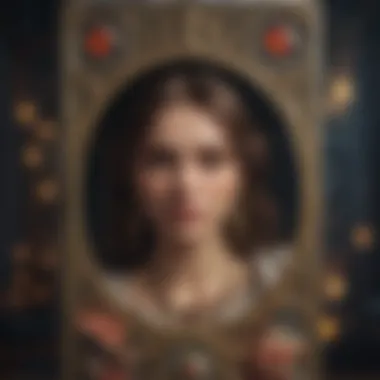

Setting Intentions
Setting intentions focuses the reading, ensuring it provides genuine insights. When a person approaches a tarot deck, establishing a clear purpose is essential. This intention acts as a guideline and creates an energetic resonance with the cards. Here are a few key points to consider:
- Define the specific question or topic you wish to explore.
- Be open to the insights and unexpected revelations that may come forth.
- Maintaining a relaxed mind fosters positive engagement with the cards.
By honing in on a specific area, such as relationships or career paths, you can direct the reading towards intuitive outcomes. It’s vital to formulate the intention not just as a question, but in a way that allows room for exploration without implying a yes or no answer.
Choosing a Spread
Choosing a spread is the next vital component in tarot reading. A spread refers to the layout of the cards and determines what aspects of the query each card will explore. Ultimately, there are several common spreads:
- Three Card Spread: Offers a snapshot of the past, present, and future, ideal for straightforward queries.
- Celtic Cross Spread: A more complex layout that examines transformative influences and internal challenges.
- Past-Present-Future Spread: Provides deeper insight into the implications over time.
Selecting the appropriate spread is critical. It sets the tone and scope of the reading. Novices may find the Three Card Spread accessible, while more experienced users could opt for the Celtic Cross for nuanced insights. Be mindful that each spread serves a unique purpose.
Interpreting the Cards
Interpreting the cards forms the crux of tarot reading. Each card has intrinsic meanings, which can vary depending on its position in the spread and the cards surrounding it. Effective interpretation requires a balanced mix of knowledge and intuition. Some fundamental considerations include:
- Card Position: The meaning can change depending on where the card appears in the spread.
- Reversals: Understanding what a reversed card signifies can add layers to interpretation.
- Contextual Awareness: Let the situation inform your understanding; relevant background can shift interpretations.
Common Questions Addressed by Tarot
Tarot cards are not merely tools for entertainment. They serve as profound instruments for exploring life's complexities. The Common Questions Addressed by Tarot section shares insights into various topics often represented in readings, such as relationships, career guidance, and personal growth. These questions foster not only connection but also clarity in decision-making.
Focusing on these core areas allows individuals to tap into the emotional, professional, and spiritual dimensions of their lives, presenting an opportunity for essential reflection.
Relationships
Tarot readings can delve deep into interpersonal dynamics. Relationships are layered and multifaceted. Like a tapestry, they embody emotions, histories, and future possibilities. When one asks tarot questions related to relationships, the cards can illuminate underlying issues or spark new perspectives. The cards might reveal unresolved conflicts or highlight the strengths and vulnerabilities present.
Common inquiries in this domain include:
- Am I in the right relationship?
- What are my partner's true feelings?
- How can I resolve conflict with my loved ones?
Through these revelations, individuals can navigate relationship intricacies with more wisdom. Understanding can encourage open dialogues, fostering healthier connections.
Career Guidance
Career is a significant aspect of our lives. It often ties closely to identity and stability. Tarot provides insights that are relevant to career exploration. The cards can reveal potential career paths and obstacles that perm sorts of arrangements may inhibit one's trail.
Examples of questions regarding careers include:
- Should I change my job or career?
- What steps can I take to achieve my professional goals?
- Am I on the right path for success?
With tarot’s narratives, individuals might identify potential blocks or opportunities, facilitating transformative actions in their professional journeys.
Personal Growth
Personal growth is often a challenging but rewarding pursuit. Tarot nurtures this transformative journey by sparking introspection. Queries related to self-awareness and self-development guide clients toward greater clarity about their aspirations or hurdles.
Some significant questions could be:
- What areas in my life need more focus?
- How can I improve my self-esteem?
- What lessons should I learn from my past experiences?
By engaging with tarot in this context, participants discover not only intricate parts of themselves but also avenues to strengthen their character and resolve inner conflicts.
“Tarot serves as a catalyst for self-understanding, bridging gaps between the subconscious hopes and fears.”
By addressing these prevalent questions, tarot guides souls toward profound realizations and informed choices. At times, these questions offer a blueprint or roadmap, navigated through difficult paths of relationships, careers, and self-growth.
Popular Tarot Spreads
Understanding popular tarot spreads is essential for anyone seeking insight through tarot cards. These spreads are essentially layouts or arrangements of cards that help the reader interpret their meaning in relation to a querent’s questions. This structure provides a framework for the reading, guiding both the reader and the querent through the session.
Importance of Popular Tarot Spreads
Popular tarot spreads are valuable because they offer established patterns for interpreting the cards. Each spread has its own unique focus, addressing different aspects of life such as relationships, career, and personal growth. Knowing which spread to use can enhance the clarity and relevance of the reading. Adhering to these well-known patterns also assures the querent that there is method to the interpretation, fostering trust in the process.
Benefits
- Simplified interpretations: Popular spreads can streamline the analysis process for both novices and experienced practitioners.
- Versatility: Certain spreads, like the Three Card Spread, can apply to various questions effectively.
- Habitual practice: Working with common spreads can aid beginners in as they become more familiar and comfortable with the meanings of the tarot cards.
Here, we dive deeper into three prominent tarot spreads: the Three Card Spread, the Celtic Cross Spread, and the Past-Present-Future Spread. These specific spreads have gained popularity for their practical application and depth of insight.
Three Card Spread
The Three Card Spread is one of the simplest yet most powerful layouts in tarot. Often used for quick inquiries, it involves drawing three cards positioned in succession, with each card representing a specific element of the querent's situation. Typically, the positions signify:
- Past
- Present
- Future
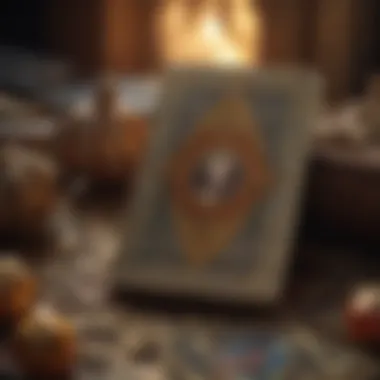

This layout provides a straightforward insight into how current circumstances are influenced by past events, which can therefore affect potential future outcomes. The clarity offered through this spread aids users in recognizing patterns and modern challenges faced in personal development. Moreover, this spread allows for flexibility such that readers can interrogate particular life aspects by reshaping the designated meanings of each card.
Celtic Cross Spread
One of the most comprehensive spreads in tarot is the Celtic Cross. This complex arrangement consists of ten cards that represent various aspects relating to a single question, providing an in-depth analysis of both the querent’s circumstances and state of mind. The positions often address:
- The present situation
- The influences behind the situation
- Future possibilities
What makes the Celtic Cross particularly unique is its ability to combine broad contextual information with timely detailed insights. It covers numerous dimensions of a life question without losing focus, allowing readers to draw critical connections between their current experiences and unresolved past influences. The practice of interpreting this spread also enhances a reader's analytical skills.
Past-Present-Future Spread
The Past-Present-Future Spread is another well-regarded option, and closely parallels the Three Card Spread. However, its significance lies in its explicit invitation to assess previous experiences, consider current circumstances, and explore what does the future hold in high detail. In this layout:
- The first card represents key influences from the past.
- The second card reflects present themes.
- The third card elaborates on potential future outcomes or lessons as progression unfolds.
This specific spread assists querents in situating their lives in a temporal context. In showcasing transitions over different time frames, seekers of clarity are able to identify the origins of certain challenge or potential opportunities. The accountability enacted through this process promotes growth and adaptability in responding to unfolding scenarios. Overall, the variety and richness found within these popular tarot spreads reliably unlock pathways toward understanding complex life questions.
Individual Card Meanings
The exploration of individual card meanings offers critical insights into the practice of tarot reading. Each card represents varied symbols, themes, and energies, fueling the interpretation process based on a query or topic at hand. The intricacies allow for tailored readings that can tackle different life situations, from emotional challenges to career dilemmas. Understanding these meanings provides readers with the tools necessary for a more in-depth analysis, enriching their practice and enhancing their decision-making process through reflection.
The Fool
The Fool, numbered 0 in the tarot deck, holds significant importance within the Major Arcana. It symbolizes new beginnings, spontaneity, and a sense of adventure. As a representation of potential, The Fool encourages an open-minded approach toward life’s uncertainties. This card speaks to the reader's willingness to embrace the unknown, take risks, and pursue new opportunities.
When The Fool appears in a reading, it invites reflection about personal limits and aspirations. Here the imagery often puts meaning in feminine or masculine energy seeking freedom and independence. Analyzing this card can promote dialogue surrounding preconceived notions that inhibit fully embracing one’s path.
The Lovers
As one of the more recognizable cards, The Lovers delves into themes of relationships and choices. Representing love and connection, this card explores harmony and union between partners, encompassing not only romantic feelings but also familial and platonic ties. The Lovers also further implies the importance of making conscious decisions that resonate with one’s true self.
Interpretation remains essential here, as the card can urge a deeper examination of emotional bonds and personal sacrifice versus desire. Whether relating to lead significance or developing trust, this card invites responders to assess their interactions with others critically.
The Wheel of Fortune
The Wheel of Fortune primarily revolves around cycles, fate, and change. It signifies that life is ever-evolving with natural flows of ups and downs. The significance here relates to understanding one's position within the overall cycle of experience, highlighting both the external factors affecting one’s life and the internal responses.
Often, this card prompts discussion on the elements of fate and free will, and how they intertwine in our journeys. Spotting the themes of opportunity and potential serendipity helps readers contextualize where they stand today. After drawing this card, practitioners might find value in discussions surrounding personal resilience and adaptability to change, which is an important aspect of navigating life challenges.
Ultimately, grasping individual card meanings fosters richer interpretations and uplifts readings with nuanced comprehension of tarot as a reflective tool.
Psychological Implications of Tarot Readings
The realm of tarot readings extends beyond mere divination; it delves into the psychological aspects of the individuals who seek guidance. Understanding the psychological implications provides insight into how tarot can facilitate emotional and cognitive reflection. With these readings, clients often experience a blend of personal insight and therapeutic benefits. This dimension offers a profound relevance in navigating emotions, thoughts, and external situations.
Tarot as a Reflective Tool
Tarot can serve as a lens through which individuals perceive their lives, encouraging reflective thought. When engaging with a tarot deck, the process may lead users to uncover subconscious thoughts or feelings they have not recognized before. The very act of picking cards and prompting questions can ignite a dialogue within.
Clients project their turmoil, aspirations, and challenges onto the cards. This internal dialogue can illuminate matters that require attention. By contemplating the symbols and narratives of the chosen cards, reades can turn their focus inward.
The ambiguous nature of the cards fosters a space for personal interpretation. Consequently, these representations may promote understanding rather than definitive answers.
Cognitive Dissonance and Decision Making
The interface of tarot readings and cognitive dissonance presents an intriguing interplay. Cognitive dissonance occurs when individuals hold conflicting beliefs or emotions, leading to mental discomfort.
“Tarot can act as a catalyst to confront these shadows.”
A tarot reading might provide insights prompting clients to grapple with dissonant notions, thus pushing toward resolution or action. For instance, a person confronted with choices causing emotional conflict may use tarot to examine their feelings more thoroughly.
Its role in decision-making can unfurl beliefs, desires, and obstacles, creating a clearer pathway. By appreciating the mind's complexity, counselors using tarot as a tool can guide clients to understand the rationale behind emotions during uncertainty.
In summary, the psychological implications of tarot readings function as a reflective and cognitive tool. As clients engage with the cards, they initiate valuable exploration, nurturing resolution in the face of dissonance. Ultimately, the intersection of tarot and psychology illustrates how such spiritual practices can support holistic well-being, assisting individuals in making sense of their narratives.
Tarot in Contemporary Practice
In modern society, the practice of tarot has evolved beyond its historical esoteric roots. Today, tarot is more accessible and is approached through various contemporary lenses. This section explores how tarot is utilized, emphasizing three key areas: online tarot readings, the integration of astrology with tarot, and the thriving community resources available for practitioners.
Online Tarot Readings
With the advancement of technology, online tarot readings have become particularly prevalent. Many platforms provide virtual sessions, making it easier to connect with professional tarot readers. These services range from personal consultations to pre-recorded readings.
Advantages of online tarot readings include:
- Convenience: Individuals can seek readings from the comfort of their homes. There is no need to travel.
- Accessibility: Even remote individuals can connect with gifted readers globally.
- Anonymity: It allows users to explore sensitive issues without fear of judgment.
Online tarot tools, like dedicated websites and mobile applications, help users to engage with cards on a personal level. Automatic spreads, card interpretations, and insightful articles can prompt self-reflection. However, one should remain cautious. The authenticity and ethics of online practices can vary significantly, necessitating extensive research to find reputable sources.
Integration with Astrology
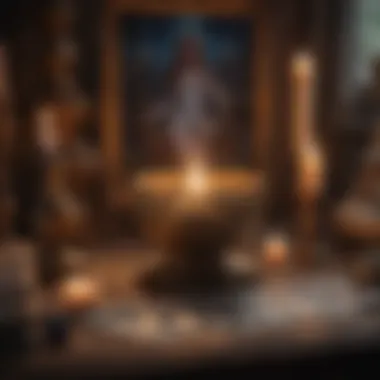

The merging of tarot with astrology presents a profound opportunity for deeper insights. Both systems hold value in personal understanding and decision-making. The astrological principles enrich tarot readings positively. Each tarot card may correspond with specific celestial bodies, inquiries, and even astrological signs.
Some benefits include:
- Enhanced Readings: Understanding astrological influences can provide added context to a tarot session.
- Personalization: Practitioners can align their tarot readings based on the individual's natal chart or current planetary transits.
- Holistic Approach: This integration embraces a broader metaphysical experience, reinforcing connections to universal energies.
Both methods together can supply substantial depths of wisdom, guiding the individual towards clearer understanding in all areas of their lives.
Community and Resources
The tarot community thrives on shared literature, workshops, and forums. This network includes an exchange of ideas and experiences. Facebook groups, Reddit forums, and local meet-ups can stimulate discourse and provide support for both novices and seasoned practitioners how to navigate the complexities of tarot.
Key community resources include:
- Online Platforms: Websites like Reddit (r/tarot) allow for rich discussions and resource swapping.
- Books: Authors like Rachel Pollack and Mary K. Greer write extensively about tarot philosophies and practices.
- Social Media Groups: Platforms such as Facebook host numerous groups focused on tarot card interpretations and personal experiences.
This sense of community serves as an important support system, continually enriching the practice and interpretation of tarot. It allows individuals to ask questions, share readings, and learn from one another, deepening personal connections to tarot’s insights.
Harnessing online tools and community resources not only elevates individual practices but expands the entire landscape of contemporary tarot engagement, ensuring its relevance in this evolving world.
Common Misconceptions about Tarot
Tarot cards often provoke varying reactions. Some view them as mere tools for fortune telling, while others regard them as instruments of profound insight. Understanding the misunderstandings surrounding tarot is vital. Recognizing these misconceptions allows readers to appreciate the true nature of tarot and its role in personal reflection. This section examines two major misconceptions: flair of tarot readings as fortune telling and the skepticism often associated with tarot practices.
Divination versus Fortune Telling
Many people conflate tarot with outright fortune telling, lumping both into the same category. While fortune telling emphasizes predicting the future, tarot also promotes self-exploration and personal understanding. The key difference lies in intent.
- Fortune telling focuses on outcomes and events.
- Tarot readings facilitate introspection, delving into underlying thoughts and emotional states.
It is crucial to comprehend that tarot readings serve a dual function. They present possible future scenarios based on present choices but also invite inquiries about present conditions that may affect those paths. Therefore, tarot's deeper purpose is less about anticipation and more about enabling presence and advocacy for personal change globally.
Tarot and Skepticism
Skepticism frequently shadows tarot as it lies outside mainstream science. This doubt stems from numerous sources, like its classification among other occult practices. For some, tarot simply feels too enigmatic. They question its relevance or legitimacy in helping navigate life's complexities. Such skepticism can overshadow an individual's possibility for personal insight influenced by tarot.
While skepticism merits consideration, dismissing tarot entirely overlooks its potential significance. Here are some positive aspects to consider:
- Therapeutic Value: Tarot can promote self-awareness, similar to psychological practices.
- A Reflective Tool: Individual insight stems from card interactions during readings.
Anonymous perspectives distinguish negative views about tarot, enabling holistic understanding. The benefits it brings can easily divert folks from an excessively cynical stance.
Understanding makes room for dialogue, opening pathways for recognition and personal integration of tarot's benefits.
Ethical Considerations in Tarot Reading
Tarot readings can bring enlightment and understanding, however, they also come with a set of ethical obligations that practitioners must navigate carefully. Ethical tarot reading ensures clients' well-being and respects their emotional state. Many practitioners, especially those new to this ancient art, may underestimate the significance of ethical considerations in their readings. Misinterpretations of a reading's intent can lead to confusion or distress in clients, possibly impacting their lives significantly.
Countless readers advocate that ethical tarot reading comforts and empowers clients, giving them agency over their choices. A sound ethical framework allows professionals to maintain a standard of conduct, fostering trust and respect during any reading session.
Respecting Client Autonomy
Client autonomy forms a foundational aspect of ethical practices in tarot reading. Each client brings unique experiences and emotions to the table. Readers should prioritize the client's authority over their own life direction. It is vital for tarot practitioners to provide insight without imposing their views or predictions. Discussions should focus on the varying potentials that readings unveil, allowing clients to draw their own conclusions.
While tarot cards offer guidance, the interpretation of their meanings should not be taken as absolute truths. Instead, questions and discussions about those interpretations foster an environment of empowerment for the client. Every individual agility possesses and must honor.
By encouraging open dialogue, tarot professionals can elevate the experiences and comfort of their clients. This strengthens the connection, resulting in a more accurate and richer reading. Clients are more likely to engage deeply with the material when they feel validated and respected.
Handling Sensitive Topics
Some tarot readings naturally touch upon delicate issues. Clients may seek insights on personal matters like relationships, health, or finances, which could be emotionally charged. Consequently, the tarot reader must approach sensitive topics with care. A respectful tone is essential as this lends to a sensitive and honest reading experience.
It’s good practice to assess the emotional preparedness of clients. Do they wish to discuss heavy subjects openly? Understanding personal boundaries boosts the client’s comfort levels, allowing readings to unfold more successfully. If a topic seems too challenging, a tenable strategy for the reader is to offer general advice, pivoting towards lighter areas instead.
Further, compassion and understanding go a long way when interpreting messages from the cards. Tarot readers can reassure their clients that they can control the old energies that the cards reveal. Valuing emotions over purely logical readings adds an important layer of depth for everyone partaking in the reading.
Ethical tarot reading is essential for developing trust between the reader and the client, ultimately allowing for a more genuine exchange of insights.
When practitioners apply ethical considerations judiciously, tarot readings can be aligned with each client's emotional educational journey. Through respecting client autonomy and handling sensitive topics as they arise, tarot becomes a tool not only for foresight but for empowerment.
The End
Understanding the nuances of tarot cards and their applications can immensely improve individual insight and decision-making. This article dissects the relationship between tarot readings and the questions that often preoccupy individuals, showcasing its relevance in various areas of life.
The concluding section emphasizes the importance of approaching tarot not just as spiritual practice but also as a significant psychological tool. Cards do more than predict the future; they foster self-discovery and consciousness. They promote exploration of thoughts and emotions, allowing for deeper reflections. This insight is valuable for both the consultant and the reader.
Summation of Key Points
- Understanding Tarot Cards: Tarot derives its power from extensive historical roots along with individual card meanings that create intricate connections.
- Mechanics of Interpretations: The effectiveness of a tarot reading hinges on setting intentions correctly and interpreting card placements within chosen spreads with dedication.
- Common Applications: People often turn to tarot when confronted with questions in relationships, careers, or personal struggles, allowing insight into different facets of life.
- Misconceptions: There's a divide between divination and traditional fortune-telling, a critical distinction that needs analysis and understanding.
- Ethical Reading: Maintaining respect for client integrity during a reading is vital, especially when navigating sensitive questions or circumstances.
Future of Tarot in a Modern Context
The future of tarot promises to be dynamic and influential as practices align with changing societal norms. Today, online tarot readings proliferate, providing access to seekers who may find traditional settings intimidating. Also, integration with astrology opens new viewpoints, potentially enhancing interpretive depth. Community forums, like those on reddit.com or discussion groups on social media such as facebook.com, foster shared experiences amongst both experienced practitioners and empathetic audiences looking to glean insights.
As tarot steps into a modern context, it carries implications that endure beyond mere readings. Education surrounding ethical practice, compounded with the evolving digital landscape, converges to make tarot a crucial instrument for contemplation and discussion. By maintaining fidelity to its roots while embracing the modern, tarot stands resilient in offering insights for a substantial answer to life's queries.
